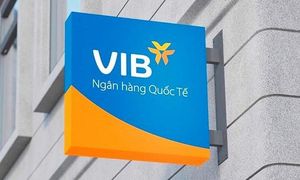OpenAI has officially launched its new reasoning model, o3-mini, marking a significant upgrade for coding and STEM applications. This latest model offers enhanced performance and faster response times, redefining the capabilities of AI-driven assistance.
Launched on February 2, 2025, o3-mini works across multiple platforms, including ChatGPT, Azure OpenAI Service, and GitHub Copilot. OpenAI has integrated this model with improved features, making it ideal for technical problem-solving and coding tasks. For the first time, free users on ChatGPT can access o3-mini, extending its reach to those who might not have paid subscriptions.
OpenAI claims o3-mini is 24% quicker than its predecessor, o1-mini, enabling users to get faster and more accurate results than before. According to OpenAI’s internal evaluations, o3-mini produces clearer answers with stronger reasoning capabilities, with testers preferring its responses to those generated by o1-mini 56% of the time.
“Evaluations by expert testers showed o3-mini produces more accurate and clearer answers,” OpenAI stated, highlighting the improvements this model brings to computational tasks. With user feedback also noting a 39% reduction in major errors on complex inquiries, the shift to o3-mini seems promising.
Developers can now select reasoning levels ranging from low to high depending on their needs. This flexibility enables the model to adjust its cognitive workload, optimizing responses for various challenges. “This flexibility allows o3-mini to 'think harder' when tackling complex challenges or prioritize speed when latency is a concern,” OpenAI added.
For those building applications, o3-mini supports advanced functionalities such as structured outputs and reasoning effort control, which streamline the integration process. It is being rolled out to users of ChatGPT Plus, Team, and Pro plans, who can expect features like web search functionality alongside their API services.
ChatGPT Plus and Team users will notice expanded access, with their daily message limits increasing to 150 messages, drastically improving usability. The Pro users, who pay $200 monthly, will enjoy unlimited access to the model, providing them with unprecedented tools for coding and reasoning tasks.
OpenAI has emphasized the urgency of this model rollout against the backdrop of fierce competition within the AI field. This release came just days after Microsoft made o1 free for all Copilot users and as DeepSeek introduced new advancements. o3-mini aims to provide OpenAI a competitive edge by being cost-effective and efficient, with operational costs about 63% lower than o1-mini.
On the safety front, OpenAI has implemented deliberative alignment, enhancing the model's ability to follow user prompts according to established safety guidelines. This mechanism means o3-mini is equipped to handle sensitive subject matter responsibly and effectively, maintaining user safety as the primary concern. OpenAI’s research indicates significant improvements on safety benchmarks, which is increasingly important as AI systems face scrutiny from regulatory bodies.
To maximize its capabilities, o3-mini incorporates chain-of-thought reasoning, enhancing its aptitude in producing clear and logical responses to user requests. This advanced thinking process provides clarity and depth, making users' interactions with the AI more productive.
Though the reception has been mostly positive, some concerns have arisen among users about the model’s variability depending on the task complexity. Perplexity AI, which integrated o3-mini recently, indicated some mixed feedback, noting underperformance under particularly challenging prompts. Nevertheless, these issues highlight the need for continued refinements to uphold the model's reliability across use cases.
OpenAI’s commitment to staying at the forefront of AI development is not just about creating faster models; it’s about providing safer, more intelligent solutions for users. By giving free access to o3-mini, OpenAI is broadening its audience and enabling more users to experience high-level AI capabilities without financial barriers.
Going forward, the integration of o3-mini within Microsoft's ecosystem—ranging from Azure services to applications such as GitHub—suggests OpenAI is strategically positioning itself within the larger tech framework. This move not only increases functionality for developers but also enhances the overall value proposition for users, whether they are casual coders or professional developers.
With new tools consistently reshaping the tech industry, o3-mini stands as OpenAI's bold step forward, combining advanced reasoning with accessibility. The anticipation surrounding this model and its potential applications could lead to significant advancements, inspiring innovation across sectors reliant on coding, STEM education, and technical problem-solving.



